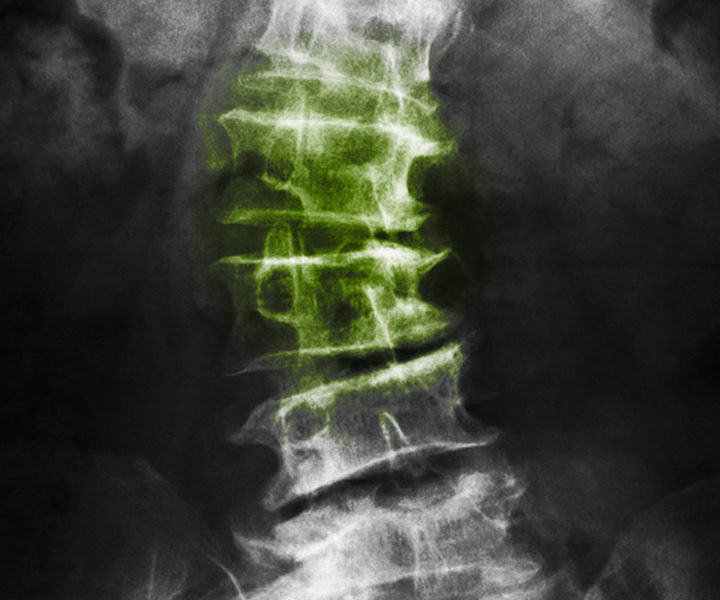BACK PAIN
PROBLEMS WE TREAT
We treat all three types of spine-related pain: cervical (neck), thoracic (back), and lumbar (lower back).
The cervical spine, which is built for mobility and flexibility, is composed of seven small vertebrae, joints, muscles, vascular elements, ligaments, and nerve roots. It is the only part of the spine that is able to move the head in many directions. However, this freedom of movement also makes the neck susceptible to injury and pain. Apart from accidents and injury, osteoarthritis, degenerative disc disease, and spinal stenosis can all cause neck pain.
The lumbar spine, which is composed of bones, joints, ligaments, muscles, and nerves, works to support the weight of the upper body, providing mobility for a range of everyday motions, including twisting and bending. The most common causes of lumbar pain are mechanical issues and soft-tissue injuries, such as improper movement of the spinal joints, damage to the intervertebral discs, and compression of nerve roots. We treat sacroiliac joint (SI) dysfunction, which is believed to be caused by either too much or too little movement of the joint.
SOLUTIONS WE OFFER
The neck, also called the cervical spine, is composed of seven vertebrae which can be injured from sitting for extended periods of time, a whiplash in a minor accident, as well as other causes. A timely treatment of neck pain or discomfort is crucial to prevent it from becoming worse and causing a bigger, longer-lasting problem, such as chronic neck stiffness or pain. In most cases, the pain can move into the shoulders and the upper back.
Cervical Traction (decompression)
Traction techniques used by therapists can be completed manually with the hands or mechanically. This therapy is often recommended for individuals suffering from neck strains, neck arthritis, herniated or bulging discs in the neck, cervical muscle spasms, and other related conditions. Typically a therapist will begin with manual traction and progress to mechanical if the manual techniques were tolerated well and effective in decreasing pain and tingling.
Mechanical Traction
Has the same benefit as manual traction but allows for a more prolonged treatment session. The patient will lie on a table that has computerized traction equipment attached at one end, which precisely measures the amount of pull applied to the cervical spine. Traction whether done manually with a therapist’s hands or with a mechanical device, can have the same outcome. This process decreases the pressure on the spinal discs. It is done by stretching out the spine (and the attaching muscles and ligaments), which increases the distance between the vertebra. This allows for improved circulation, as well as exchange of fluids within the disc. It can possibly eliminate the need for surgery for alleviating neck and arm pain. It can also alleviate numbness and tingling in the arm.
Lumbar Traction
Is used in the same way as cervical traction. The tractioning force can be applied manually through either leg or through the pelvis. If effective in decreasing the patient’s pain, we often progress to mechanical traction.
Manual Traction
Manual traction is administered by the therapist gently grasping the skull and applying a controlled and very specific force to the spine to relieve pain and tingling in the arm. Changes in the angle of pull can have a significant impact on the effectiveness. Apart from using it as a tool to alleviate pain, it is also used to evaluate the source of pain so we can give you an accurate treatment plan.
Manual Therapy
Manual Therapy is the skilled passive movement of joints and soft tissue around the joint, which includes the ligaments and joint capsule. Therapists that are manually based are) are concerned with restoring normal joint movement. The benefits of manual therapy are the freeing up of the joints being worked on, which decreases pain. Anybody with stiff or painful joints can benefit. All joints of the body can be treated with manual therapy.
Extension based Movement
A way to treat more complicated conditions of the spine, extension based exercise (also referred to as Mckenzie), offers a comprehensive approach in rehabilitating spinal issues. It is based on a patient’s response to repeated positions and movements, which allows us to identify the appropriate treatment method that not only reduces pain, but is also something that the patient can perform. This method places importance on educating patients regarding proper posture and self-care.
Mobilization with Movement
Brian Mulligan, a Physical Therapist from New Zealand, developed the concept of mobilizations with movement. His treatment techniques have been used worldwide and are an effective treatment for decreasing pain with joint movement. Aside from treating neck pain, his techniques are also used in alleviating low and mid back pain, as well as treating injuries to the upper and lower extremities. By applying a gentle controlled pressure, while the patient actively moves the joint, we can often painlessly free up joint restriction and decrease pain.
Core Stabilization
Core strength and stability are much like the foundation of a house. If the foundation is weak, the house will shift and crack. Similarly if your core is weak, your body will over time experience more pain and eventual injury. Your deep core muscles support control and move your spine and pelvis.
Stabilization exercises can benefit especially those who are suffering from spine-related pain. The most common types of stability exercises involve the core and the lumbar spine. Along with manual therapy, stabilization exercises have been found to be effective in improving pain intensity, range of motion, and quality of life.
We have staff who are trained to evaluate and treat mechanical dysfunctions of the spine. We also help teach patients ways to prevent the development of spinal conditions, as well as enable them to manage and control their symptoms between treatments and after the treatment process.


